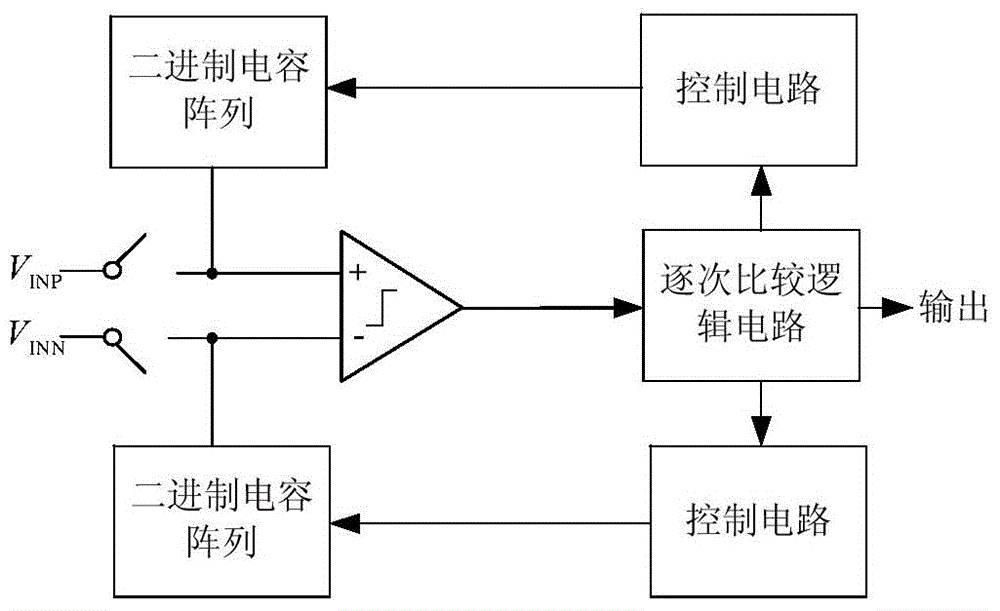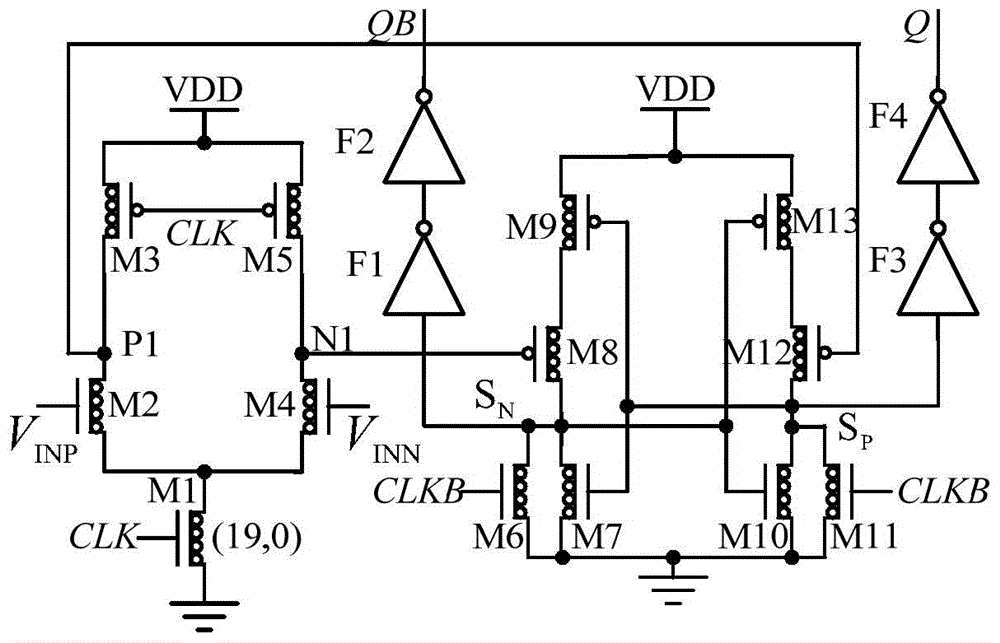Three-value carbon nanotube successive approximation analog-digital converter
An analog-to-digital converter and carbon nanotube technology, which is applied in analog-to-digital conversion, code conversion, instruments, etc., can solve the problems of large number of input and output ports, low energy utilization rate of binary capacitor array, and high circuit power consumption.
- Summary
- Abstract
- Description
- Claims
- Application Information
AI Technical Summary
Problems solved by technology
Method used
Image
Examples
Embodiment
[0027] Example: such as figure 2 As shown, a ternary carbon nanotube successive approximation analog-to-digital converter includes a latch comparator, a successive comparison logic circuit, a control circuit, a first capacitor array and a second capacitor array, and the output terminal of the latch comparator is connected to the successive The input end of the comparison logic circuit is connected, and the output end of the successive comparison logic circuit is connected with the control circuit;
[0028] As shown in Figure 3(a), the latch comparator includes a first CNFET tube M1, a second CNFET tube M2, a third CNFET tube M3, a fourth CNFET tube M4, a fifth CNFET tube M5, a sixth CNFET tube M6, The seventh CNFET tube M7, the eighth CNFET tube M8, the ninth CNFET tube M9, the tenth CNFET tube M10, the eleventh CNFET tube M11, the twelfth CNFET tube M12, the thirteenth CNFET tube M13, and the first inverter F1, second inverter F2, third inverter F3 and fourth inverter F4; f...
PUM
 Login to View More
Login to View More Abstract
Description
Claims
Application Information
 Login to View More
Login to View More - R&D
- Intellectual Property
- Life Sciences
- Materials
- Tech Scout
- Unparalleled Data Quality
- Higher Quality Content
- 60% Fewer Hallucinations
Browse by: Latest US Patents, China's latest patents, Technical Efficacy Thesaurus, Application Domain, Technology Topic, Popular Technical Reports.
© 2025 PatSnap. All rights reserved.Legal|Privacy policy|Modern Slavery Act Transparency Statement|Sitemap|About US| Contact US: help@patsnap.com



